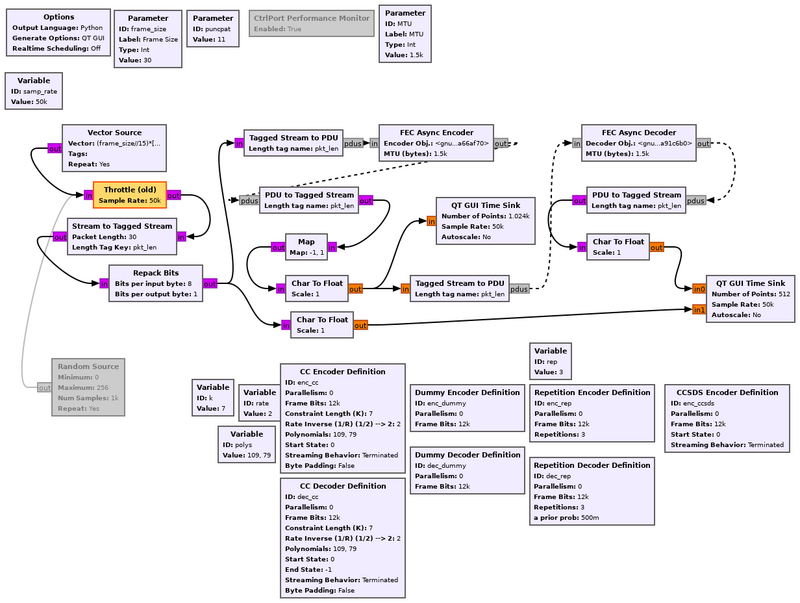CCSDS Encoder Definition
Jump to navigation
Jump to search
CCSDS Encoding class for convolutional encoding with rate 1/2, K=7, and polynomials [109, 79].
Uses Phil Karn's (KA9Q) implementation of the CCSDS encoder for rate 1/2, K=7, and CC polynomial [109, 79]. These are non-adjustable in this encoder. For an adjustable CC encoder where we can set the rate, constraint length, and polynomial, see CC Encoder Definition.
Parameters
(R): Run-time adjustable
- Parallelism
- It seems that one can create a tensor of one or two dimensions of encoders. More info is needed on this.
- Dimension 1
- Active when parallelism > 0
- Dimension 2
- Active when parallelism > 1
- Frame bits
- When not being used in a tagged stream mode, this encoder will only process frames of the length provided here. If used in a tagged stream block, this setting becomes the maximum allowable frame size that the block may process.
- Start state
- Initialization state of the shift register.
- Streaming behaviour
- Specifies how the convolutional encoder will behave and under what conditions.
- Streaming
- This mode expects an uninterrupted flow of samples into the encoder, and the output stream is continually encoded.
- Terminated
- Mode designed for packet-based systems. This mode adds rate*(k-1) bits to the output as a way to help flush the decoder.
- Tailbiting
- Another packet-based method. Instead of adding bits onto the end of the packet, this mode will continue the code between the payloads of packets by pre-initializing the state of the new packet based on the state of the last packet for (k-1) bits.
- Truncated
- A truncated code always resets the registers to the start state between frames.
Example Flowgraph
This flowgraph can be found at [1]
Source Files
- C++ files
- ccsds_encoder_impl.cc
- Header files
- ccsds_encoder_impl.h
- Public header files
- ccsds_encoder.h
- Block definition
- variable_ccsds_encoder_def_list.block.yml
